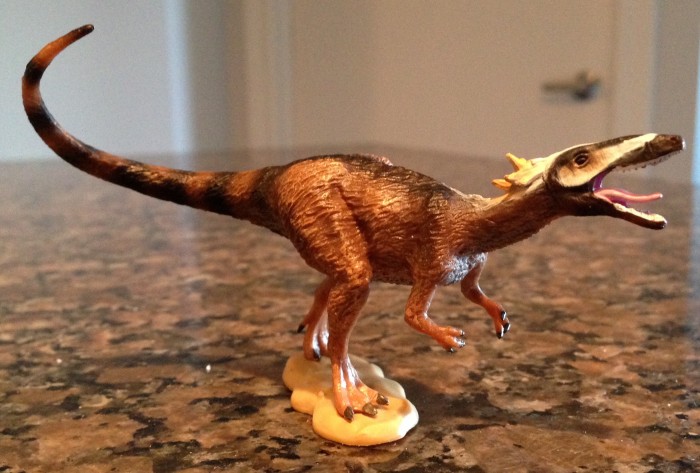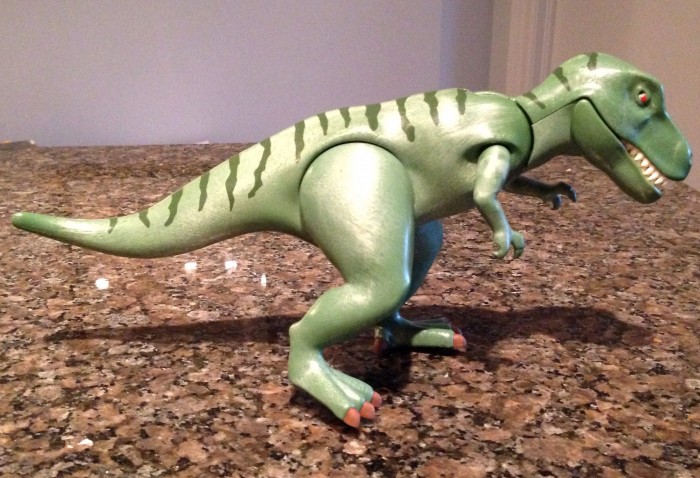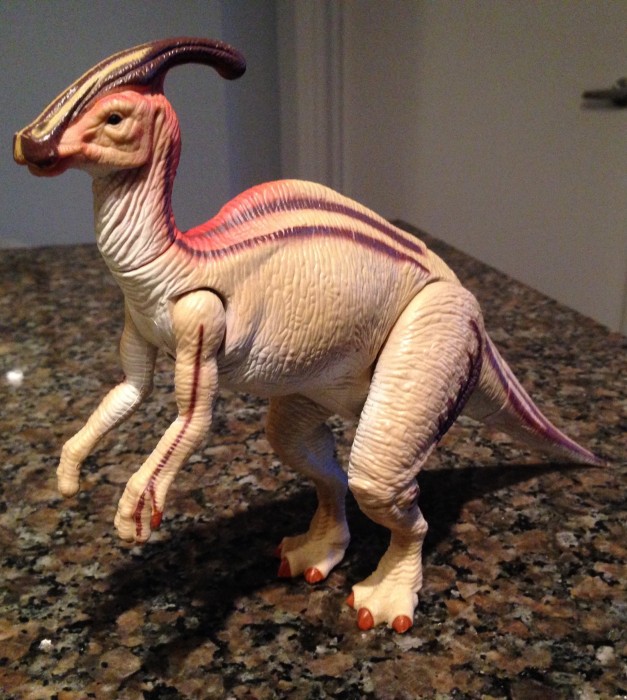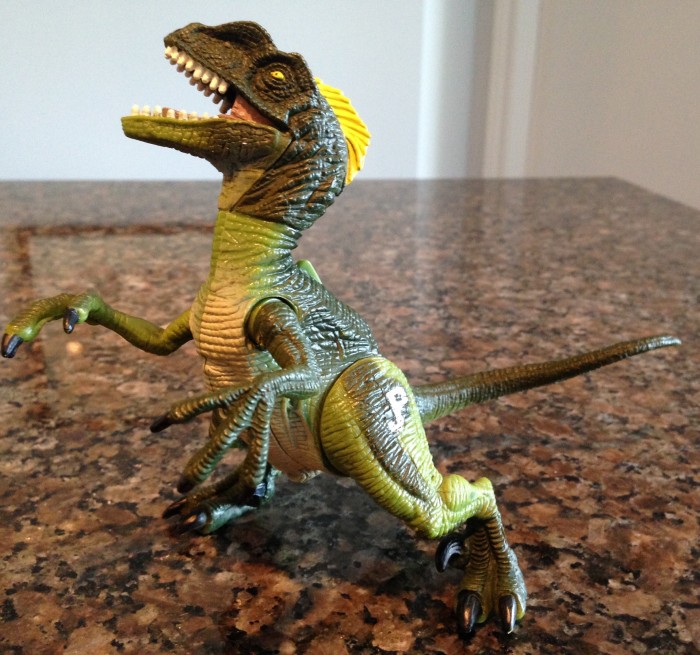The 2015 CollectA Xiongguanlong measures 10 cm long and is 6 cm tall including the raised tail.
Age: Cretaceous
Review: Daxiatitan (CollectA)
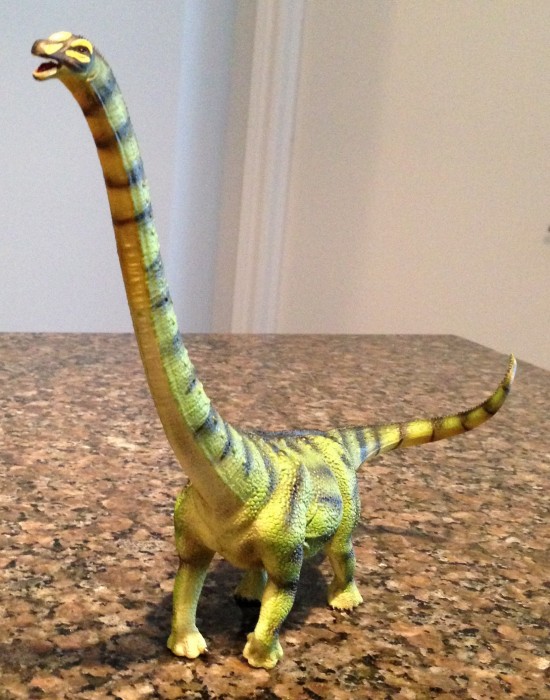
Review: Paralititan (CollectA Deluxe)
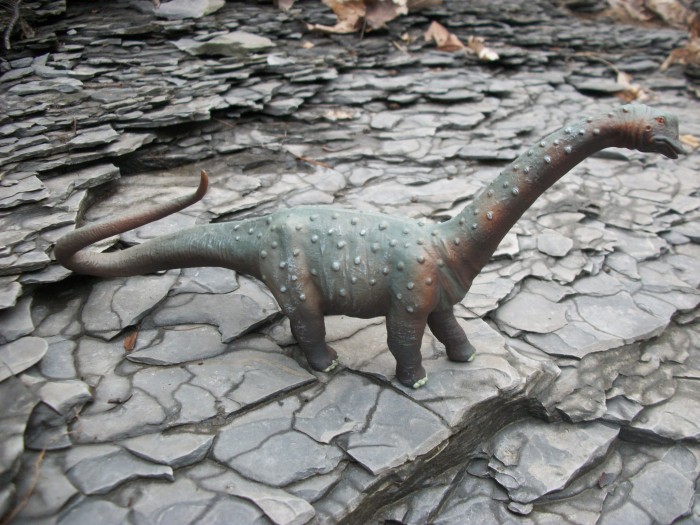
During the Cretaceous, Paralititan and its kin were some of the biggest creatures to ever exist on the planet. Paralititan stromeri or tidal giant lived 95 million years ago in an intertidal mangrove biome. The mangroves were along the southern shore of the Tethy’s sea, which is now modern Egypt.
Review: Pteranodon (Playmobil)
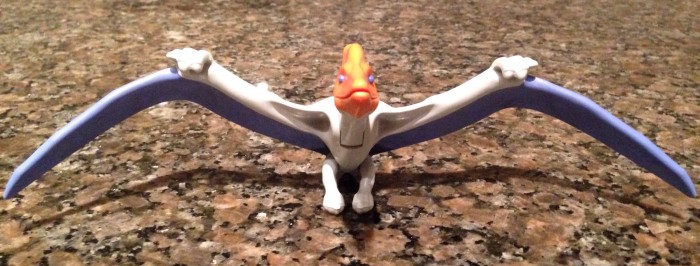
It’s virtually unthinkable for a dinosaur toyline not to have at least one pterosaur and Playmobil has gone with that most familiar of flyers, Pteranodon.
Review: Tyrannosaurus rex and Velociraptors (Playmobil)
Review: Utahraptor (CollectA)
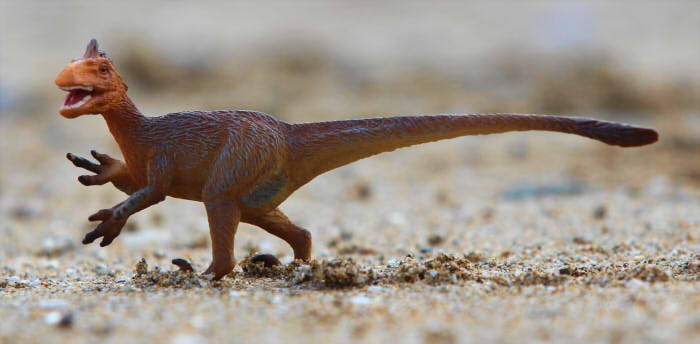
As one of the largest of the dromaeosaurids, Utahraptor ostrommaysorum perhaps first garnered significant public attention after starring in the 1999 animated documentary, Walking with Dinosaurs. Since this time, the scientifically accepted appearance of this 7m theropod has changed considerably, as more evidence has been unearthed supporting the idea that this creature was fully feathered – much like its far smaller kin.
Review: Tyrannosaurus rex “Bull”(The Lost World: Jurassic Park by Kenner)
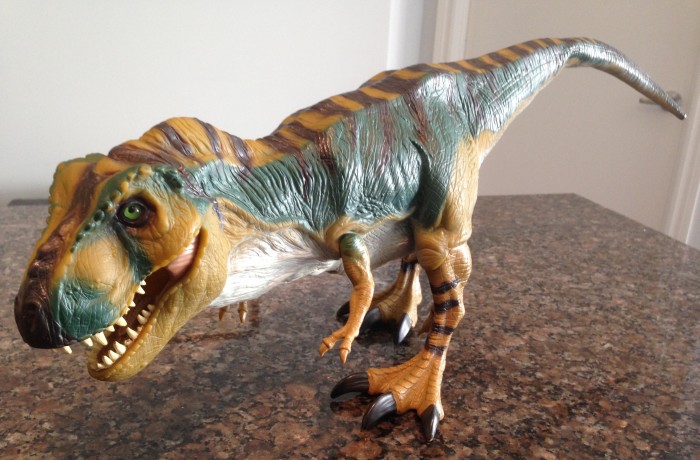
Review: Parasaurolophus (The Lost World: Jurassic Park by Kenner)
Review: Tapejara (Jurassic Park III, by Hasbro)

How the Tapejara ever became a toy in the Jurassic Park toy line is puzzling when you look back at the turbulent time before Jurassic Park III was released. Hasbro downsized after the failure of the JP Chaos Effect toys, and the lower than expected sales from Star Wars Phantom Menace toys.
Review: Triceratops (Jurassic Park: Dinosaurs by Kenner)

First released under the Lost World label in 1997, this Triceratops is rather small compared to the massive 1993 version. Its short horns and length of only 20 cm indicate that it is meant to represent a juvenile.
Review: Mosasaur by Sideshow Dinosauria

Regular visitors to the DinoToyBlog know that I enjoy reviewing every new piece in this series, but I really wanted our resident paleontologist Dr. Adam Stuart Smith to have a go at this one; truly, I doubt there would be anyone better suited to this task.

